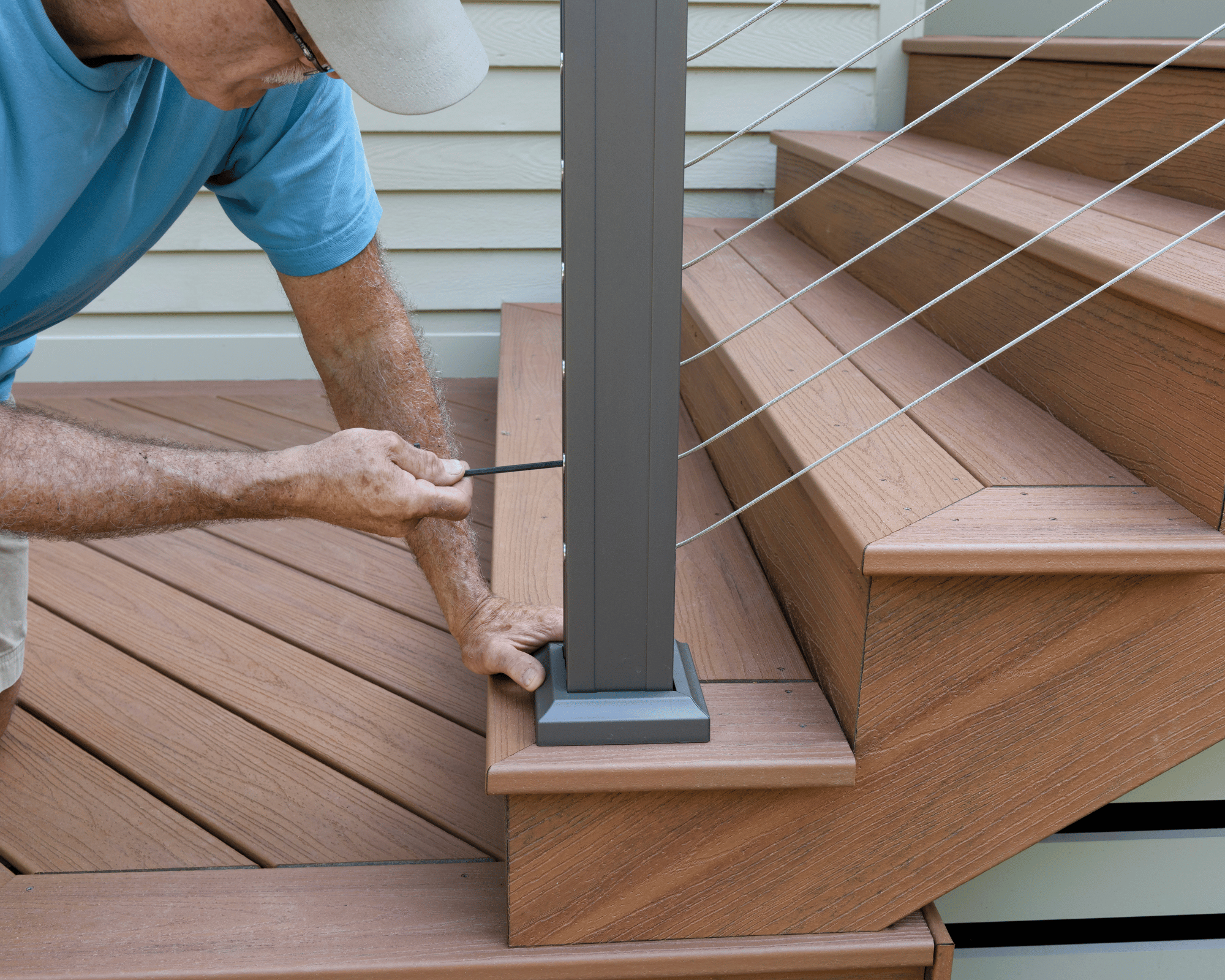Dealing With SAD? Preparation To Take Before The Colder Seasons Arrive
While some are rejoicing at the idea of summer ending and autumn approaching in a month, others are seriously dreading their SAD. Seasonal Associative Depression is one such mental health syndrome that makes an individual suffer from temporary dread and melancholy in the fall and winter seasons.

The colder months with a lack of sunlight decrease the release of melatonin in the body. Melatonin is important for your circadian and body clock. Melatonin supplements are known for helping people get into the sleep time mode. However, the darkness and gloom all throughout the days during the colder months lead to fatigue and drowsiness all throughout the day.
On one end, it can lead to a lack of motivation to wake from bed due to the much-delayed sunrise. On the other end, it can also lead to sleepless nights because your body is confused. These are some of the symptoms people suffering from SAD generally feel.
Other SAD symptoms include,
- Feeling depressed all day due to lack of energy.
- Changes in appetite and loss of it.
- Always feeling sluggish during the day and agitated during the night.
- Hopelessness & Worthlessness.
- Difficulty concentrating due to the cold weather.
Rain In Autumn!
One of the catalysts for feeling a sense of dread is the damn weather. Days without the sun and being enveloped in a gloomy cloud. Now, if you aren’t a pluviophile who finds comfort and joy in such weather, dealing with it could be difficult. Especially when you naturally gravitate towards warmer weather and vibrancy (summer & spring).
If you are someone who really likes the rain and have just stumbled across this article, it could be a little confusing for you. However, there are individuals who absolutely hate the damp season.
Now that the autumn season is approaching, there will be quite some rain in the October & November months, and although it’s pretty in the picture, you might dread the dampness that this constant rain brings.
Especially for individuals who do not have high-tech radiators, even entering one’s house could bring literal chills after a long day of rain.
So, why not use the same trick poets have been using for such a long time?
“You romanticize the season, and with so many options on your hand now, you will find some way to fall in love with rain.”
Plus, you have to start searching for ways to make your home space a lot more cozy and vibrant. After all, we seldom worry about what is happening outside when we have a beautiful home to come back to at the end of the day.
In this excerpt below, we will be discussing some of the fan-favorite means to cozy up your space and life and deal with SAD with your big girl pants on. After all, you cannot let a seasonal discrepancy let you not enjoy one of the most wonderful times of the year.
No SAD This Colder Season
Before beginning with the list, we would like to pinpoint that we are not experts in psychology. This is not a medical handbook for people diagnosed with severe SAD. These are simple tips that we have gathered from people who have suffered from SAD.
You could call these their pearls of wisdom from their journal pages, helping them cope with the damp, rainy, and colder months. However, if you think you require expert advice or even need medical help for depression, then do contact a therapist first.
So, without any further ado, let us get into a list of activities you can start doing in preparation for the colder months without having to go into hibernation (since it is not an option for us humans).
1. Literature & Cinema
One way to romanticize the colder months is to find the positive elements which the season brings. What better way to do so than indulging in some guilty overflow of positivity with happy films? A colorful Christmas movie or a comedic thrilling autumn movie is all you need to curl up to.
Remember to keep yourself warm to combat these colder months. It is the contrast that will help you feel energetic. The cold rain against the windows, and yet you are warm inside with a cup of warm coffee, watching your favorite movie.
2. Indoor Warmth
This brings us to the second tip of combating SAD. Try to add as much warmth as you can to the indoor environment. For example, begin with adding some warm lights around the bedroom and living room. Not only do they give a cozy ambiance to your rooms, but they also emit heat, which you need at the moment.
Suppose you do not have a fireplace, then light candles. Try aromatic candles, as they have therapeutic properties. Try scents that are attuned to the weather, for example, cinnamon, apple, and vanilla, which are common in autumn and winter treats. Or, if you want to change the entire aesthetic, then go for summer-scented candles like an ocean breeze.
Some other ways to add warmth to your house are adding comfortable quilts and comfortable sitting arrangements for you and your guests.
3. A Walk Outdoors
Now when we said preparation for the colder seasons, we did not mean going into hibernation confined inside your home. Getting attuned to nature is also one of the healing tricks of SAD for many.
Not always to embrace the rain, but getting accustomed to the dampness around. Try to cover yourself with warm garments before you step out, and try to take a walk every morning.
Walking, in general, can help increase your endorphins & serotonin level. Endorphins are natural painkillers, and Serotonin is a mood regulator. Both you need to work throughout the day and at night for a good sleep.
Plus, getting an early morning walk can help you enjoy the early morning sun rays before sunrise. The rays you get at the break of dawn are very good for your body and mind.
4. Try Sunrise Alarm Clock
Doctors have recommended time, and again that alarm clocks should wake an individual gently rather than suddenly pulling them into a wakeful state while their body is still in sleep inertia. This is what leads them to be in a cranky mood, and for people with SAD, it is even worse.
If a loud alarm wakes them in an irritating mood, the lack of light outside the window intensifies it. So rather than giving them the motivation to wake up again, they often fall asleep till noon.
This is why the sunrise alarm clock is the perfect solution. The mechanism comes with a sunrise light which starts with a flicker but slowly increasing intensity like an actual sunrise. Plus, the sound is quite soothing since it wakes up with melodious morning bird sounds.
Waking up slowly can help get rid of sleep inertia, which makes us feel out of control of our own bodies.
5. Rain & Good Food
If the damp rain is bothering you, then add some piping hot food to the mood, and you will be good to go. Delicious hot delights are not just good for your body but also your soul. It is also directly linked to a release of dopamine which is the universal ‘feel good’ hormone.
Plus, when you cook seasonal food, the aroma gets you familiar with the weather. Our scent has a way of lifting our mood. Knowing that the smell of pumpkin pie or soup is related to cold weather can get us excited about the weather.
Next time you are feeling low due to the cold weather, try making yourself a hot bowl of ramen and enjoy it by the window. If Pavlov’s classical conditioning theory has any truth to it, you will start associating the weather with the dopamine release coming from the food.
6. Ready Your Mind For The Season
There is no point dreading a cycle of seasons because it is inevitable. Rather you should start preparing yourself for the colder months long before they are here. Make a list of items that you like and activities you enjoy during this time.
Start a new exercise regime that can help you get fit and moving even during the winter season.
7. Start Journaling Your SAD
Commence journaling your Seasonal Affective Disorder (SAD) journey to foster self-awareness and coping. Describe mood fluctuations, energy levels, and daily activities. Note exposure to natural light, indoor light therapy sessions, and their effects. Detailed exercise routines, tracking their impact on mood.
Document social interactions and their influence on emotional well-being. Chronicle sleep patterns and dietary habits, observing connections to symptoms. Reflect on the effectiveness of strategies employed and potential triggers. By diligently journaling, gain insights into your SAD experience, aiding in personalized management, and facilitating communication with healthcare professionals.
8. Try Some Deep Sleep
Feeling refreshed after deep sleep is the simplest solution to combat SAD. No matter how cold the outside weather is or the dense clouds which have covered the sun, you will feel energized to wake because of a full sleep.
A deep sleep is imperative if you want to remain energized and productive throughout the day, no matter the season or weather.
9. Make Your Indoors Vibrant
The prominent reason behind the feeling of dread is the lack of color around. Colors have a tendency to induce psychological reactions. For example, yellow can induce excitement and positivity, and black repels light, so it can make you more depressed (if you are already suffering from one).
For the colder seasons, you can try revamping your house with some new colors. For example, you can try and add some white curtains and backdrops. This will preserve you from the cost of permanently painting your house.
You can even add colors with the help of fresh blooms. Get flower delivery chicago same day as they can help transform the mood of your interiors. Perfect for someone who loves spring and the delightful flowery aroma that comes with it.
Having a bouquet of flowers on every corner of the room helps uplift mood upon view and scent.
10. Take Regular Warm Bath
Sometimes the cold can make your body stiff, leading to a lack of motor movements. Make it a habit to take a warm bath every night. You can even opt for a warm shower if you do not have a tub.
The goal is to warm up your body a little. It is also a promising way to help you get into sleep mode.
11. Make A Schedule & Prioritize It
Prioritize scheduled activities for Seasonal Affective Disorder (SAD) by focusing on light therapy, regular exercise, social engagement, and maintaining a balanced daily routine. Ensure exposure to natural light, especially during mornings, to regulate circadian rhythms. Incorporate indoor light therapy sessions for consistent light exposure.
Engage in aerobic exercises to enhance mood and energy levels. Cultivate social connections and participate in group activities to reduce isolation. Maintain a structured daily schedule with sufficient sleep and healthy eating habits. Effective prioritization of these activities can help alleviate SAD symptoms and improve overall well-being.
Get Motivated Or Take A Break
If you have noticed, amidst the sound of the rain, everything else is mute. Do not take this moment for granted because this sound is perfect to be mindful of. It can increase your time simply concentrating on the present moment.
If you are feeling a little less motivated, it is better to first go talk to a specialist before you begin indulging in any of these activities. A therapist will be able to tell you psychologically what is triggering your SAD, the physiological problems you might deal with, and how to combat them with mental exercises first.






